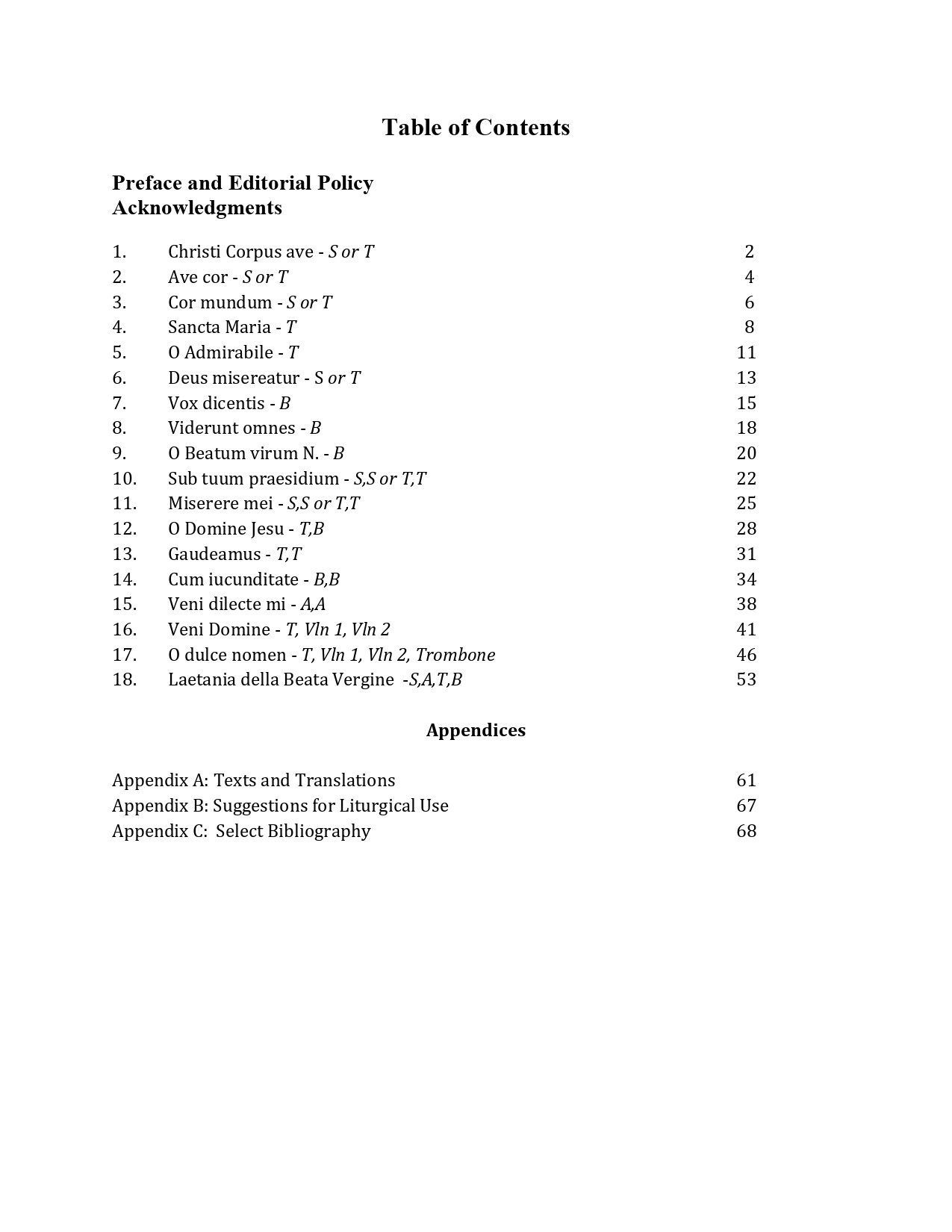Antonio Gualtieri: Motetti Libro III, op. 10 (1630)
ISBN 979-8-9865491-2-5. 68 pages. Spiral-bound printed copy: $35.00.
Also available as a PDF download: $35.00. In addition to the complete volume, individual motets in PDF format can be purchased for $5.00 each upon request sent via “contact” portal.
Unlike many other regional composers of small-scale concertato motets, Antonio Gualtieri (d.1649 or 1650) does not appear to have been a priest or member of a religious order. An active musical career led him from an early position in Rovigo to become maestro di capella at the collegiate church and seven churches at Monselice (near Padua) in 1608. According to Jerome Roche’s New Grove (1980) biographical article, Gualtieri resigned in 1625, although the title page of his 1630 motets gives the impression that he was still employed there. In 1637 he became choirmaster at the seminary of S. Antonio di Castello in Venice, where the S. Marco choirboys received their education.
Given Gualtieri’s probable status as a layman, it is not surprising that his output is evenly divided between secular and sacred music. Three collections of motets and three volumes of madrigals appeared between 1604 and 1630, all published in Venice. Presumably there were more than six titles, since the motets of 1630 bear the designation “opera X.” In any case, his experience with madrigal composition allowed Gualtieri the opportunity to infuse his motets with expressive harmonies and add melodic flourishes and embellishments in the solo voice parts, as in Deus misereatur (#6) for solo voice and continuo.
The collection contains several motets for solo voices, including two with added instrumental parts. The setting of O dulce nomen for tenor, two violins, trombone, and continuo is particularly noteworthy. It opens with a canzona-like instrumental section, followed by a section for tenor and continuo only. A brief triple meter instrumental interlude intervenes, then the tenor and continuo resume with all instruments joining for the conclusion. The result is a pleasing and effective use of contemporary compositional techniques in a small-scale sacred setting.


